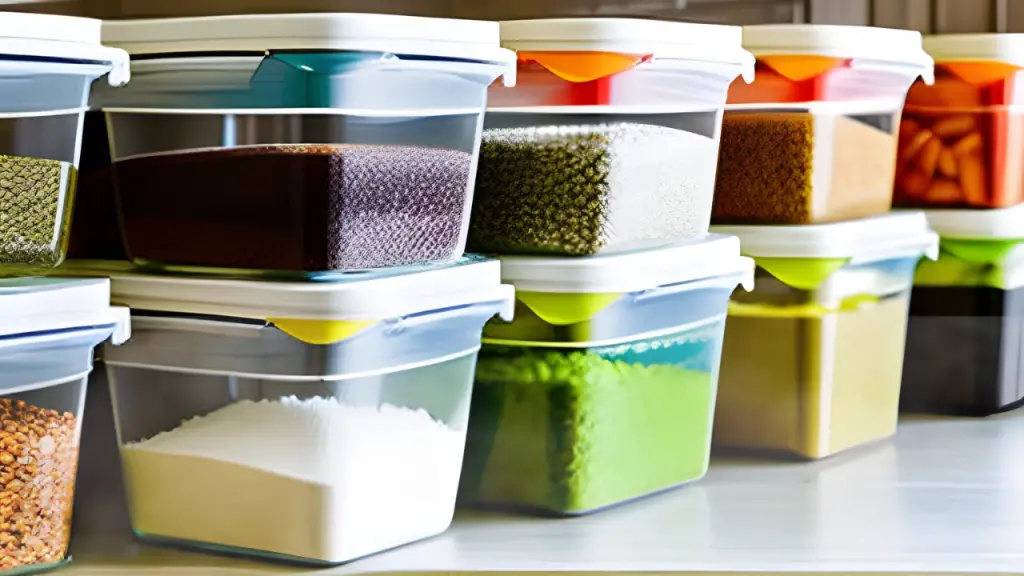
In today’s fast-paced world, organization is vital in keeping our lives efficient and stress-free. One area where the organization is particularly important is in our kitchens, where we store essential food items like rice. Plastic containers have become popular for storing rice due to their durability and convenience. However, with proper organization, finding the right amount of rice when needed can be a manageable task. This comprehensive guide will explore effective strategies and practical tips on how to organize rice in plastic containers to streamline your cooking process. So let’s dive in!
To organize rice in plastic containers effectively, follow these steps:
- Choose clean, food-grade plastic containers with airtight lids.
- Ensure the containers are dry before transferring the rice.
- Use a measuring cup or scoop to portion the rice into the containers.
- Seal the containers tightly to keep out moisture and pests.
- Label each container with the rice type and date of storage.
- Store the containers in a cool, dry place away from sunlight and heat sources.
- Stack the containers neatly to maximize space.
Organizing rice in plastic containers helps maintain its freshness, protects against humidity and pests, and allows easy access and inventory management.
How to Organize Rice in Plastic Containers?
Start with the Right Containers
The first step in organizing rice in plastic containers is choosing the right ones. Look for airtight and food-safe plastic containers with secure lids. These containers will help maintain the freshness and quality of the rice while protecting it from pests and moisture. Consider using stackable containers to maximize space in your pantry or kitchen cabinet.
Label Your Containers
Labeling your rice containers is essential for easy identification and accessibility. Use a label maker or write the type of rice and its expiration date on each container. This way, you can quickly locate the rice variety you need without rummaging through multiple containers.
Sort by Rice Type
To further streamline your organization system, sort your rice containers by type. For example, group long-grain, basmati, and jasmine rice containers together. This method allows you to grab the desired rice variety without confusion, saving time for meal preparation.
Optimize Storage Space
Optimizing every inch of your storage area is crucial if you have limited space. Consider using stackable plastic containers or investing in storage solutions like shelf dividers and lazy susans. These items help maximize vertical and horizontal space, allowing you to store more rice containers efficiently.
FIFO (First-In, First-Out) Method
Practice the FIFO method to ensure that your rice remains fresh and doesn’t go to waste. FIFO stands for “first in, first out,” which means you should use the oldest rice before using the newly purchased one. By doing so, you maintain the quality and taste of your rice while minimizing food waste.
Use Measuring Cups
Using measuring cups to portion your rice is not only practical but also aids in maintaining consistency in your cooking. Keep a dedicated measuring cup inside each rice container so you always have one handy when needed. This practice eliminates the hassle of searching for a measuring cup and promotes accurate portion control.
Store in a Cool, Dry Place
Rice is sensitive to moisture and heat, so storing your plastic containers in a cool, dry place is crucial. Avoid exposing them to direct sunlight or near heat sources like stoves or ovens. By providing optimal storage conditions, you prolong the shelf life of your rice and preserve its quality.
Regularly Clean and Inspect
Make it a habit to clean and inspect your rice containers regularly. Empty the containers, wash them with mild detergent and warm water, and dry them thoroughly before refilling. This practice ensures that no contaminants or insects are present and maintains the overall cleanliness of your storage area.
Frequently Asked Questions (FAQs)
How long does rice last in plastic containers?
Rice stored in airtight plastic containers can last up to one year. However, before consuming it, it’s essential to check for signs of spoilage, such as unusual odor or mold growth.
Can I store different types of rice in the same container?
While it is possible to store different types of rice in the same container, it’s generally recommended to separate them to maintain their distinct flavors and characteristics.
Is it necessary to wash rice before storing it in plastic containers?
It’s a good practice to rinse rice before cooking to remove excess starch. However, washing rice before storing it is unnecessary, as the starch helps preserve the quality and texture of the grains.
Can I freeze rice in plastic containers?
Yes, you can freeze rice in plastic containers. Freezing rice extends its shelf life, and airtight plastic containers are ideal for preventing freezer burn and preserving the rice’s flavor.
How can I prevent pests from infesting my rice containers?
To prevent pests from infesting your rice containers, ensure they are airtight and free from cracks or openings. Additionally, consider adding bay leaves or neem leaves to repel insects naturally.
Can I microwave rice in plastic containers?
It is generally safe to microwave rice in microwave-safe plastic containers. However, remove the lid or leave it slightly ajar to allow steam to escape.
Conclusion
Properly organizing rice in plastic containers is a game-changer for meal preparation. Following this guide’s strategies and tips, you can create an efficient and accessible system for storing your rice. Remember to choose the right containers, label them accurately, sort by rice type, optimize storage space, and practice the FIFO method. Additionally, keep your containers clean and regularly inspect your rice for any signs of spoilage. With these techniques, you’ll have no trouble finding the perfect rice for your next delicious meal!
